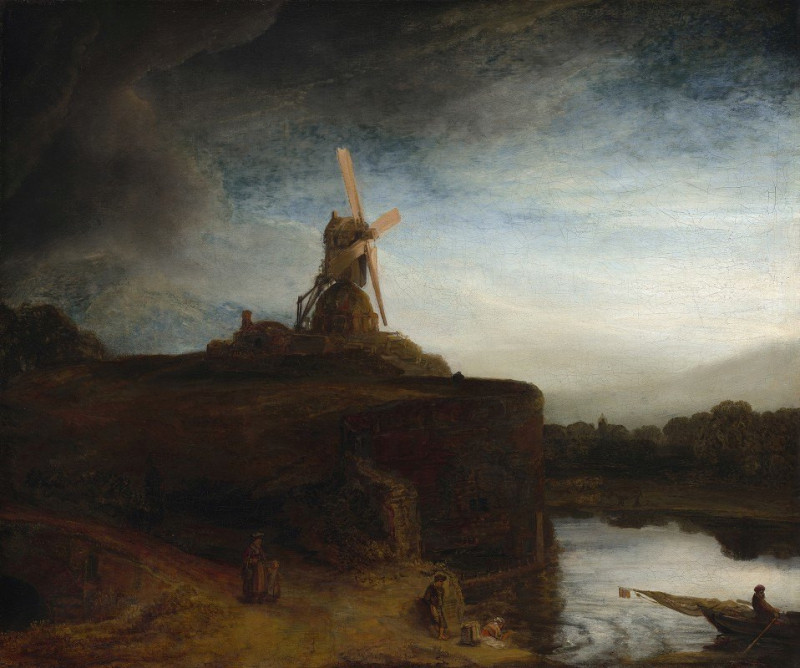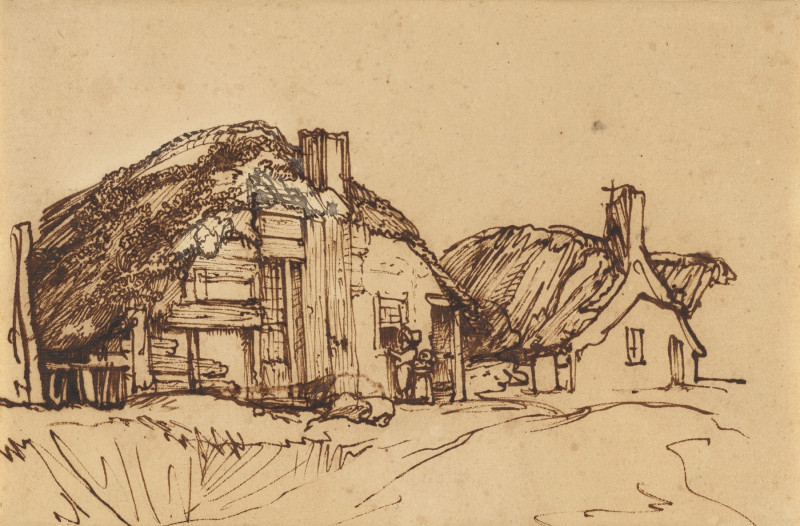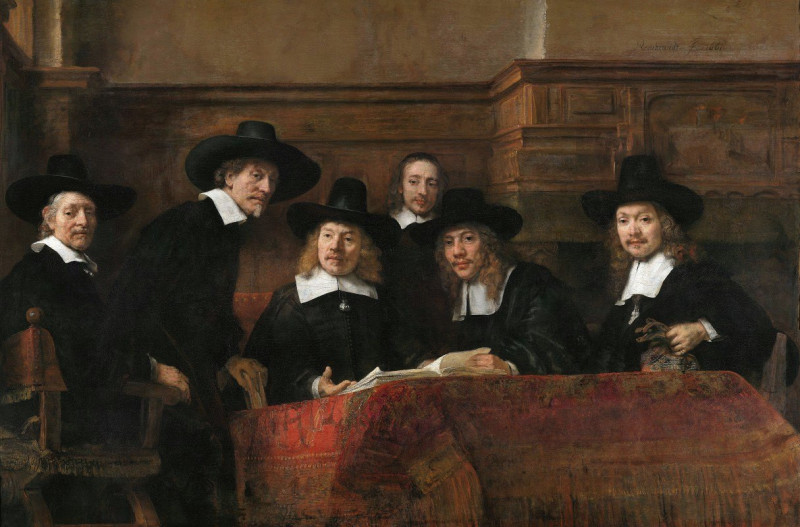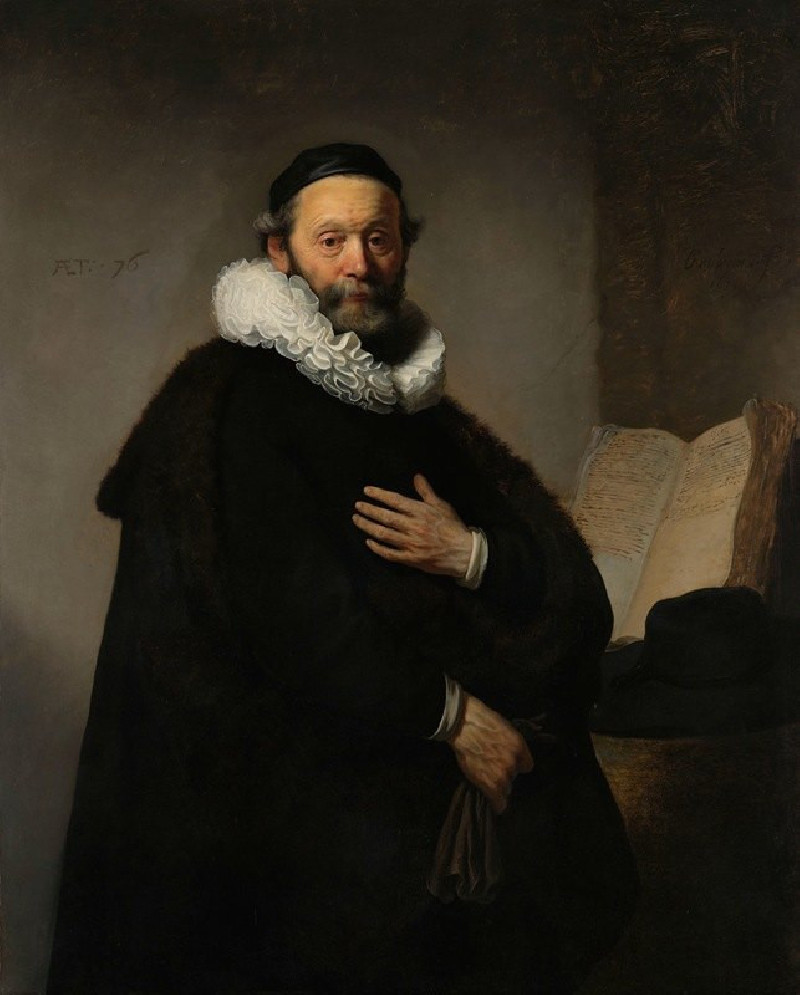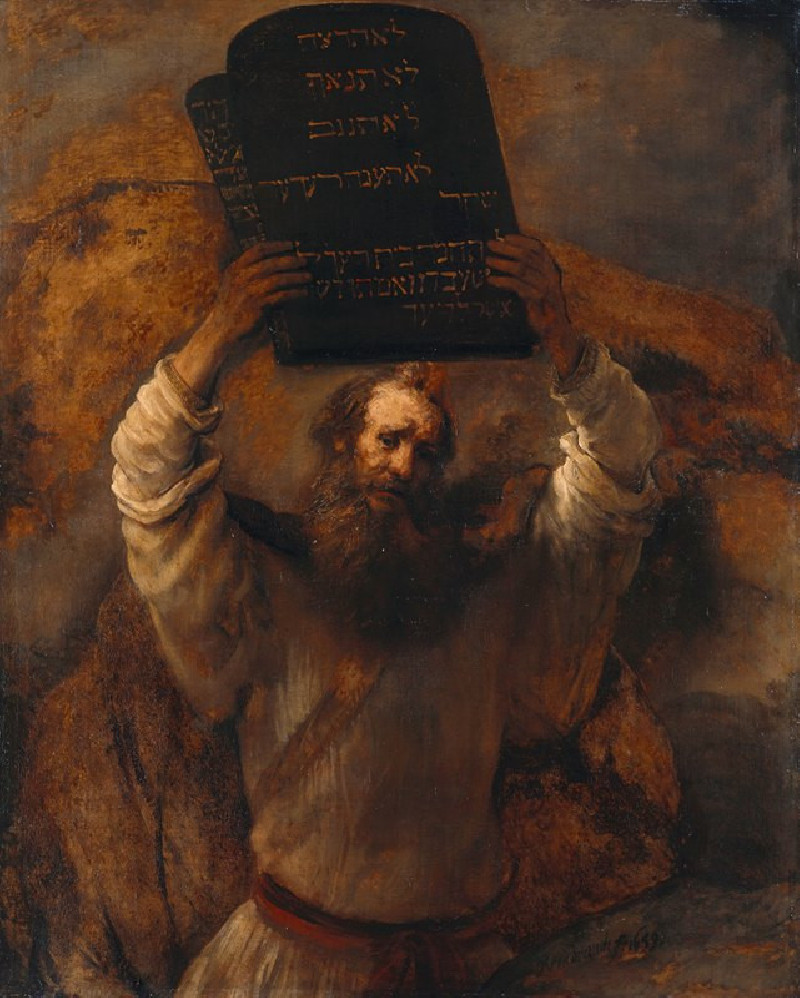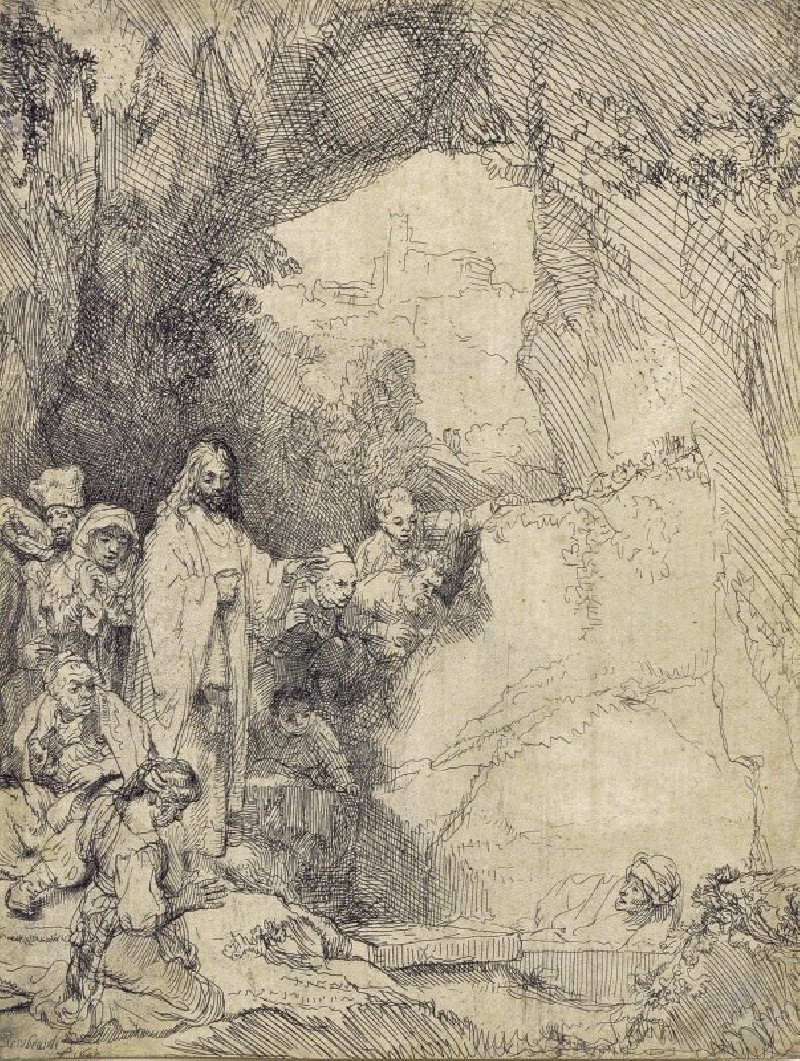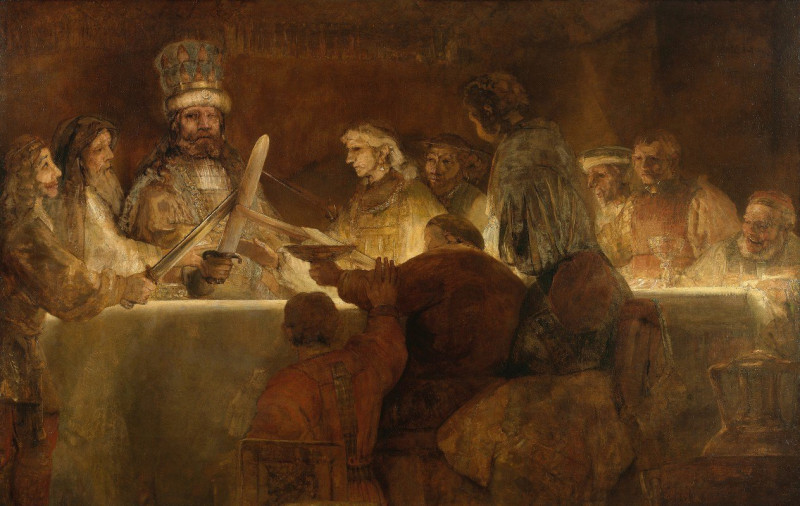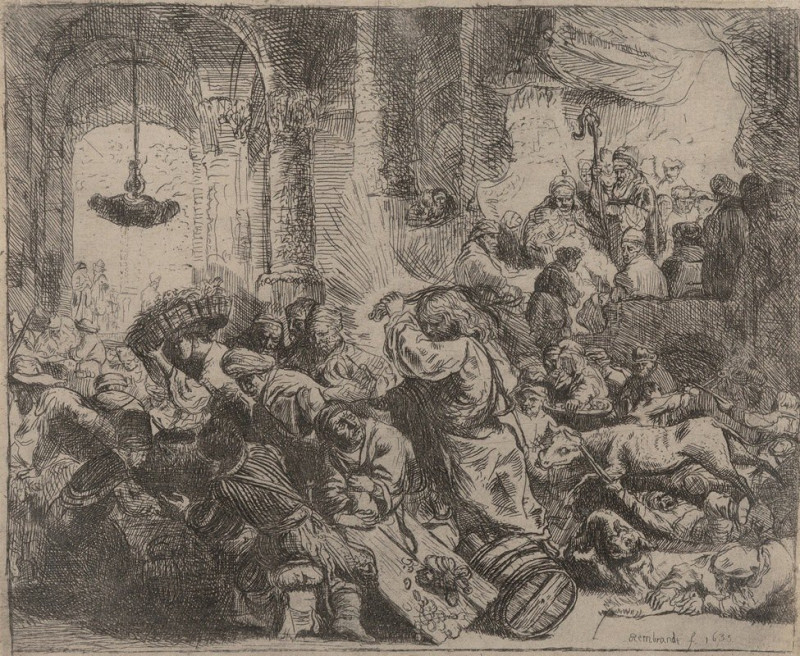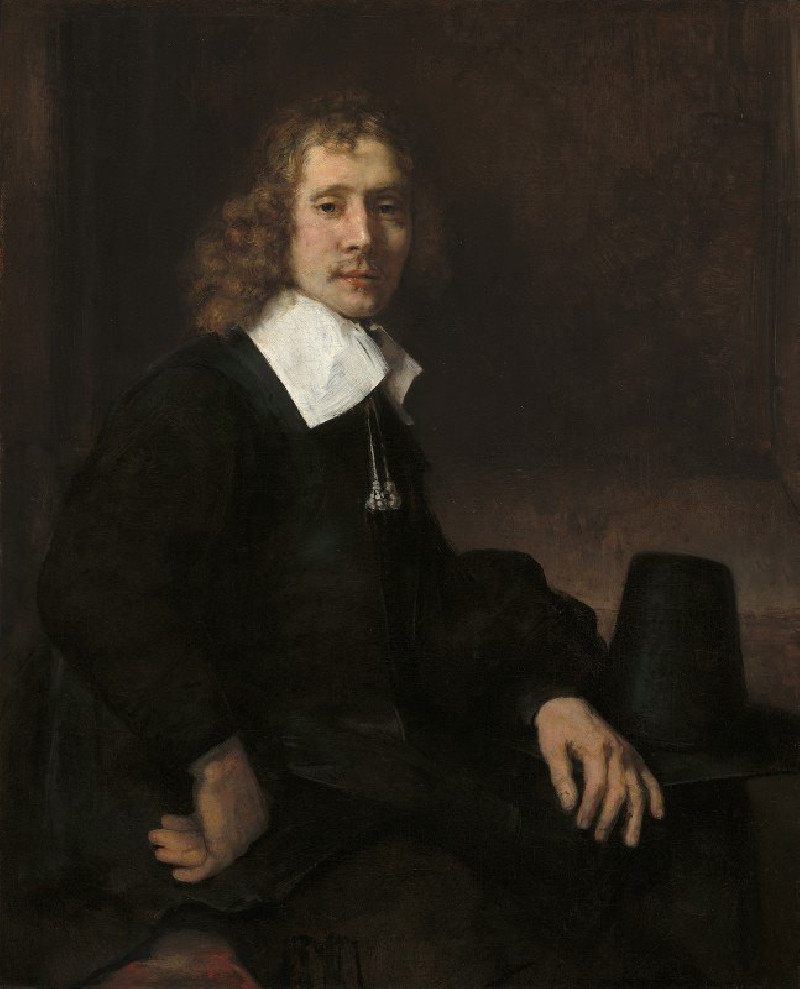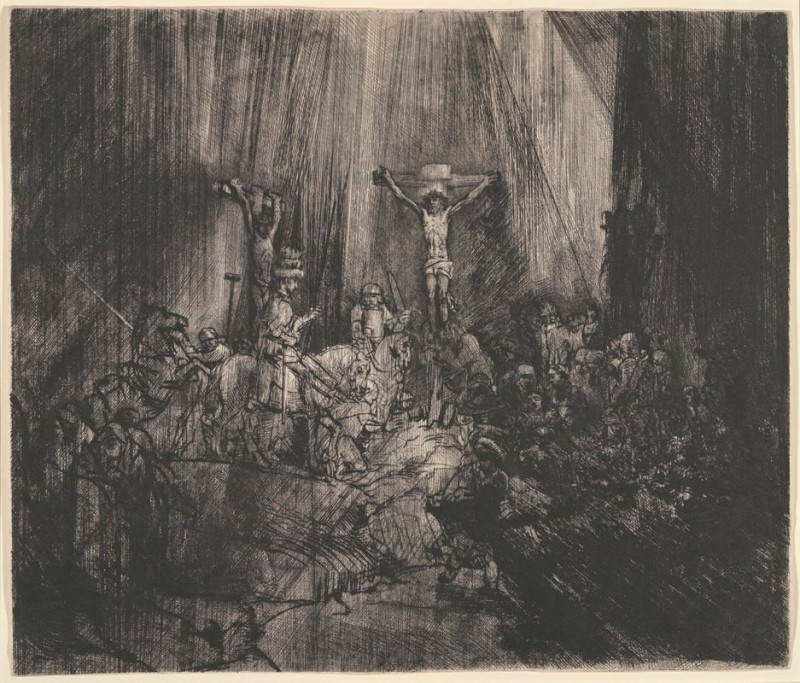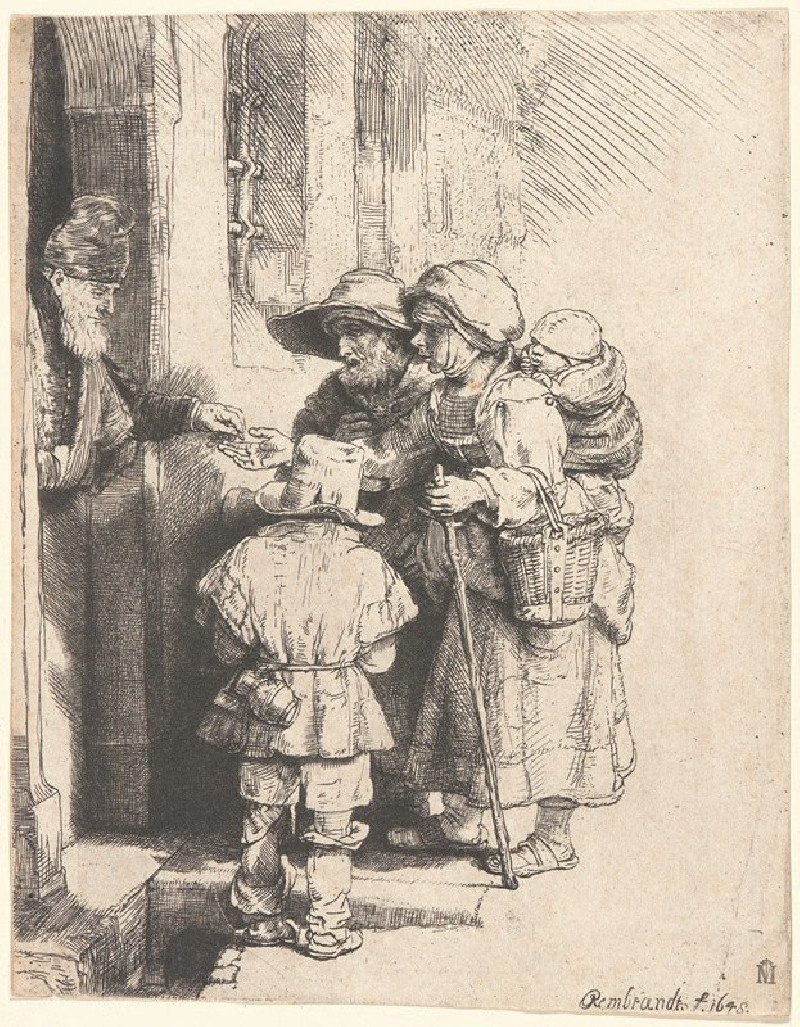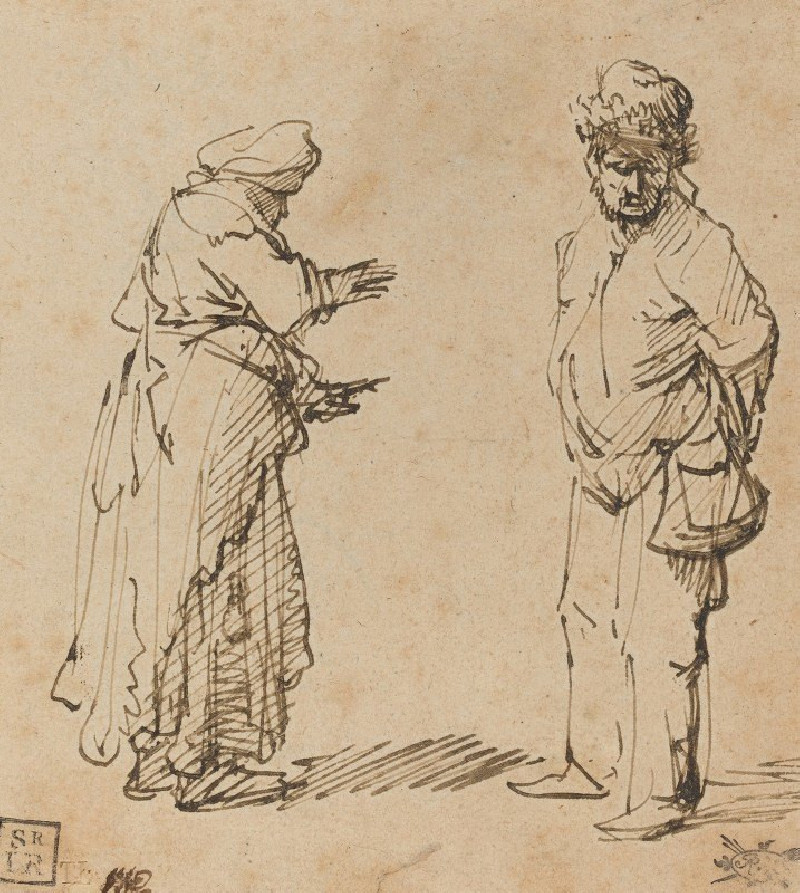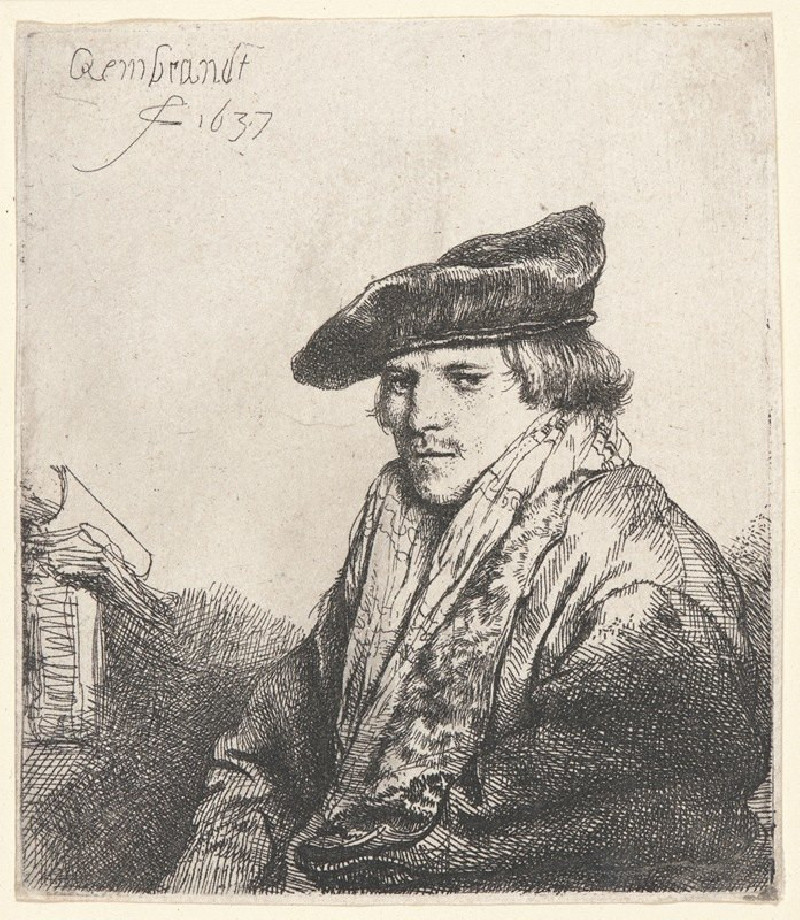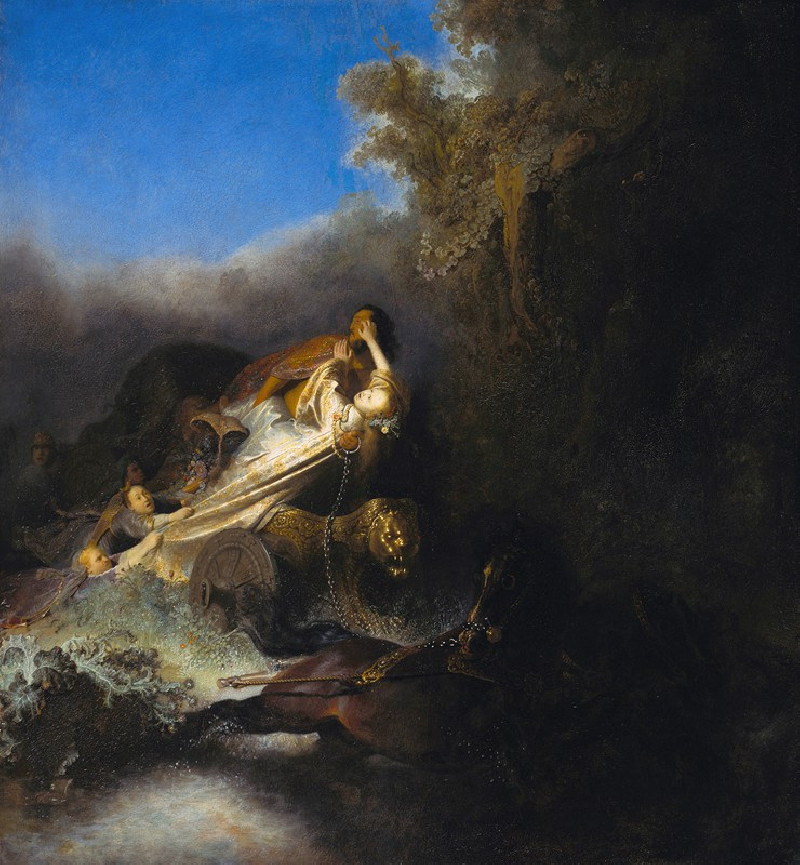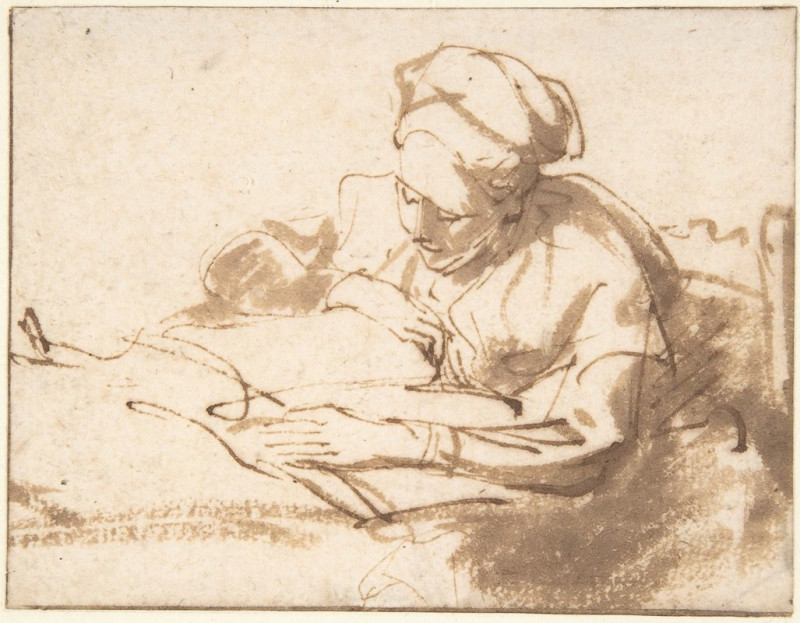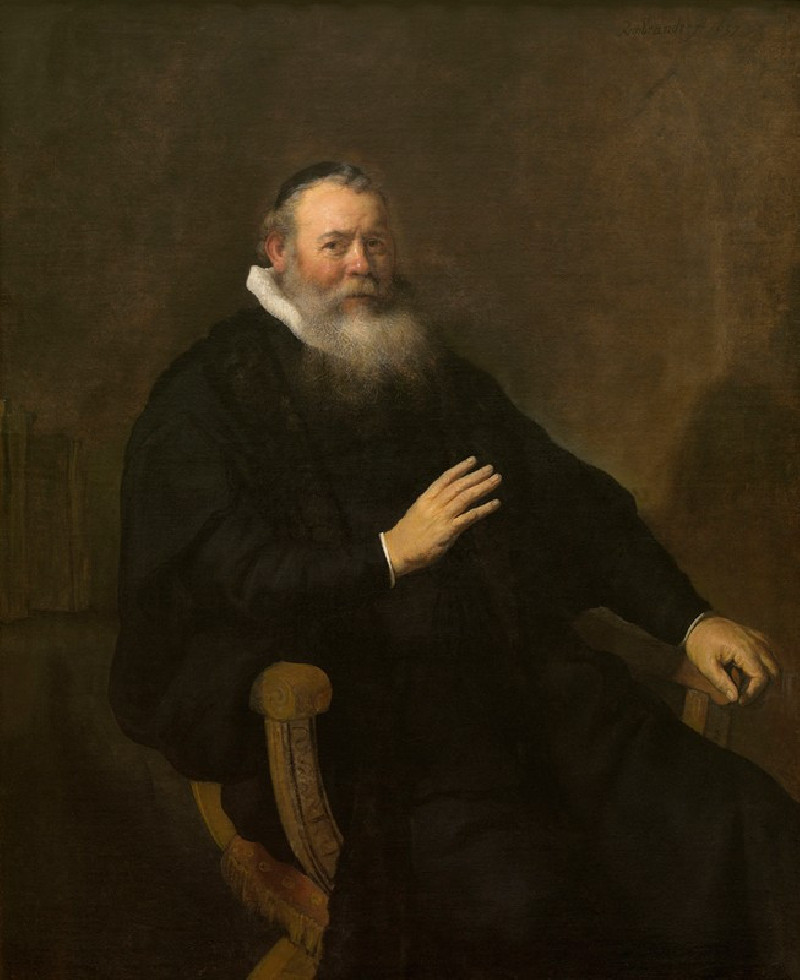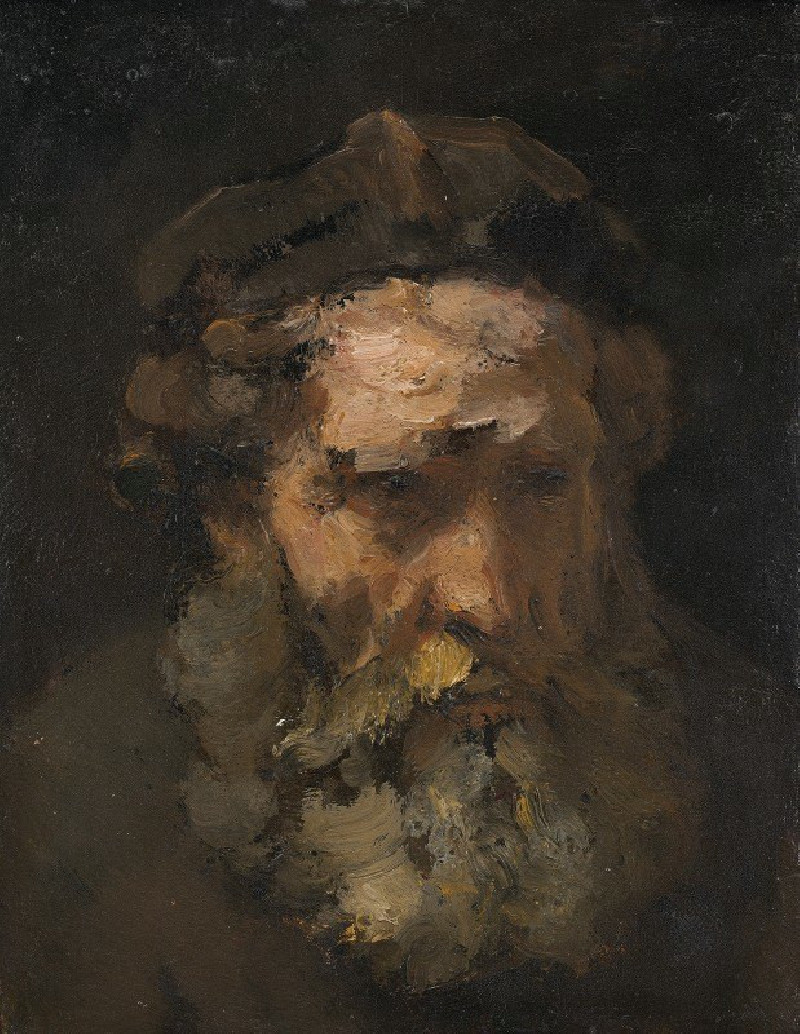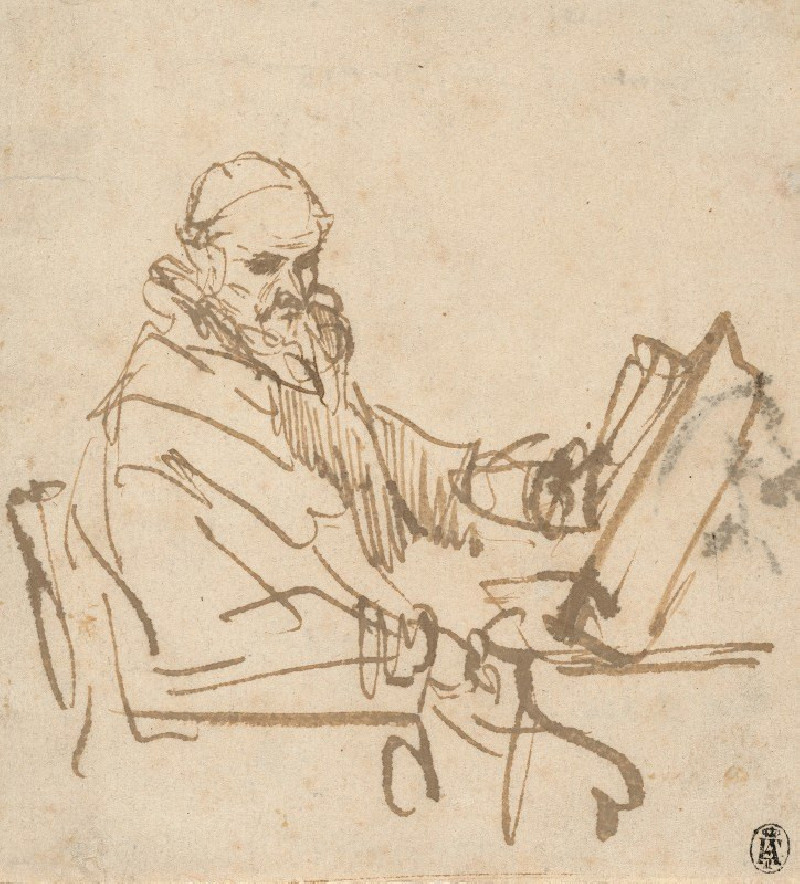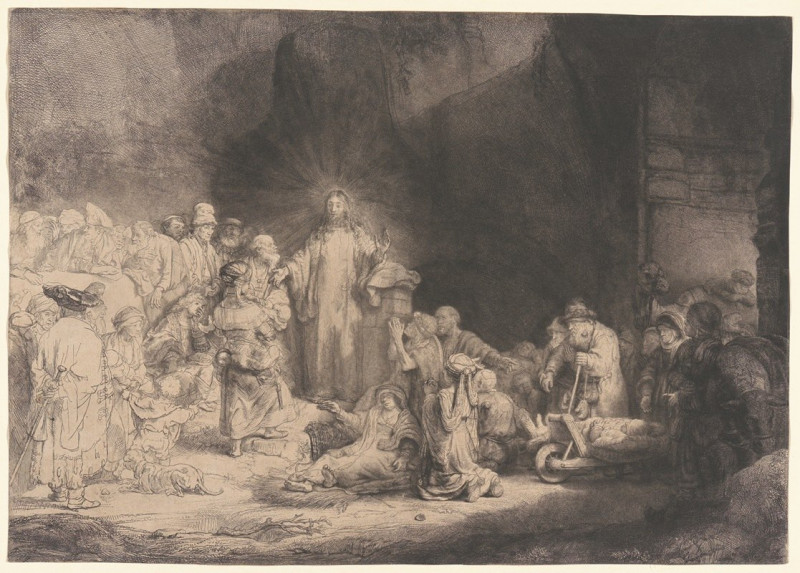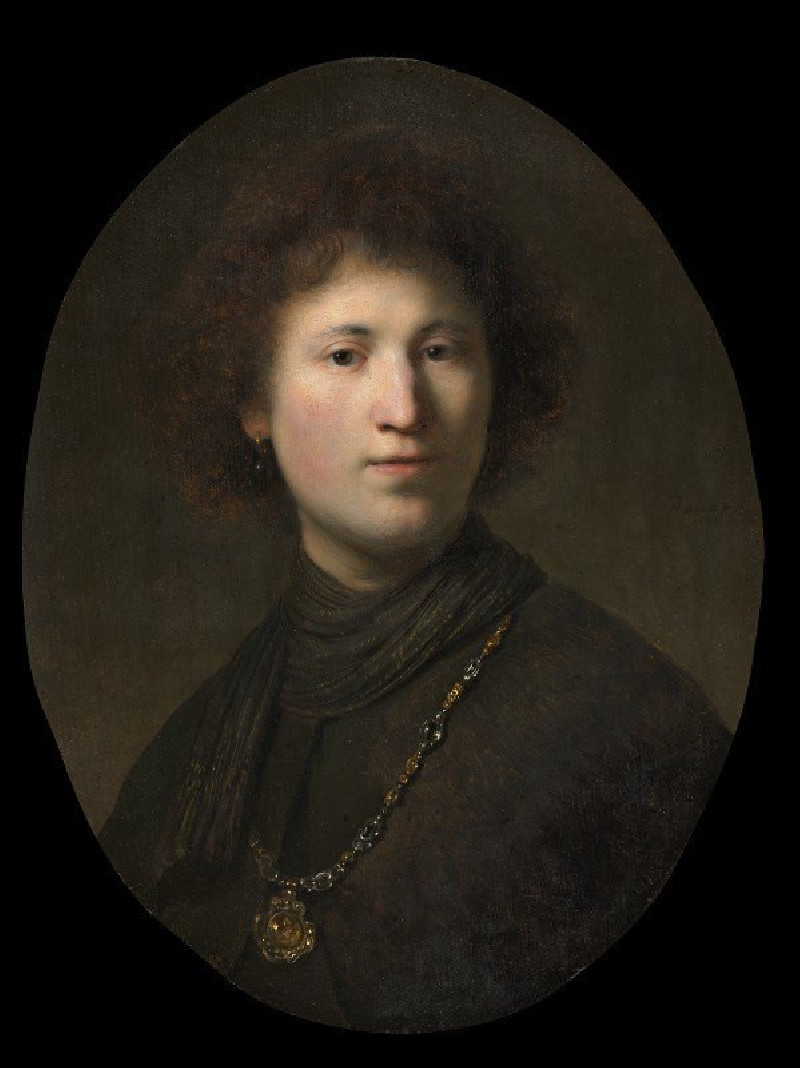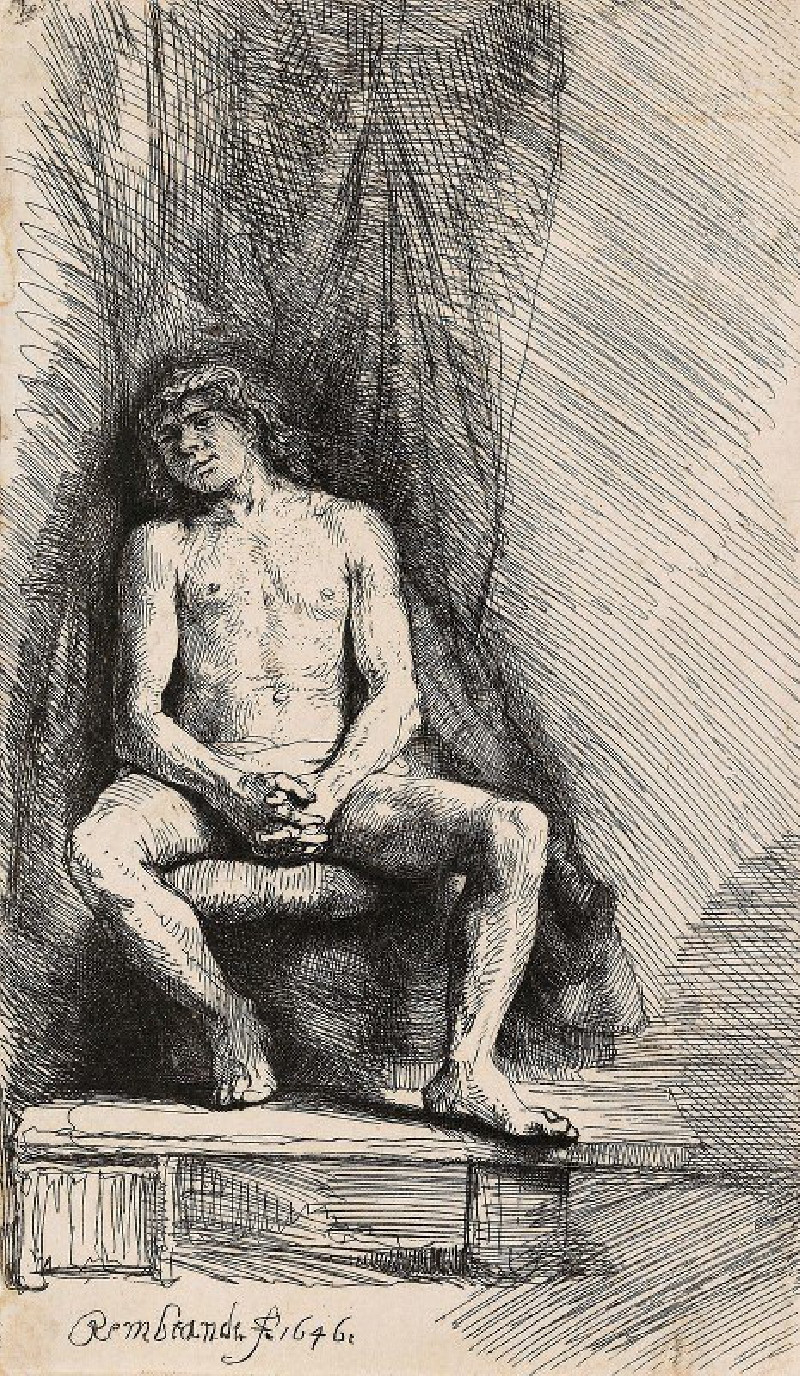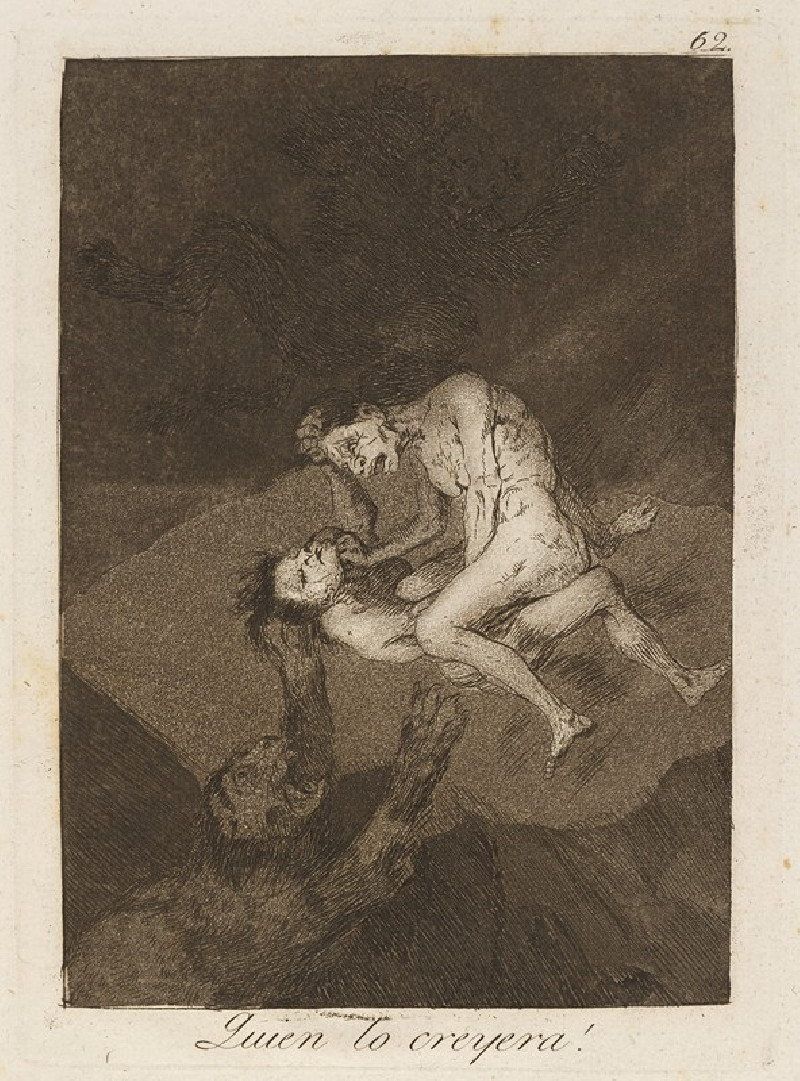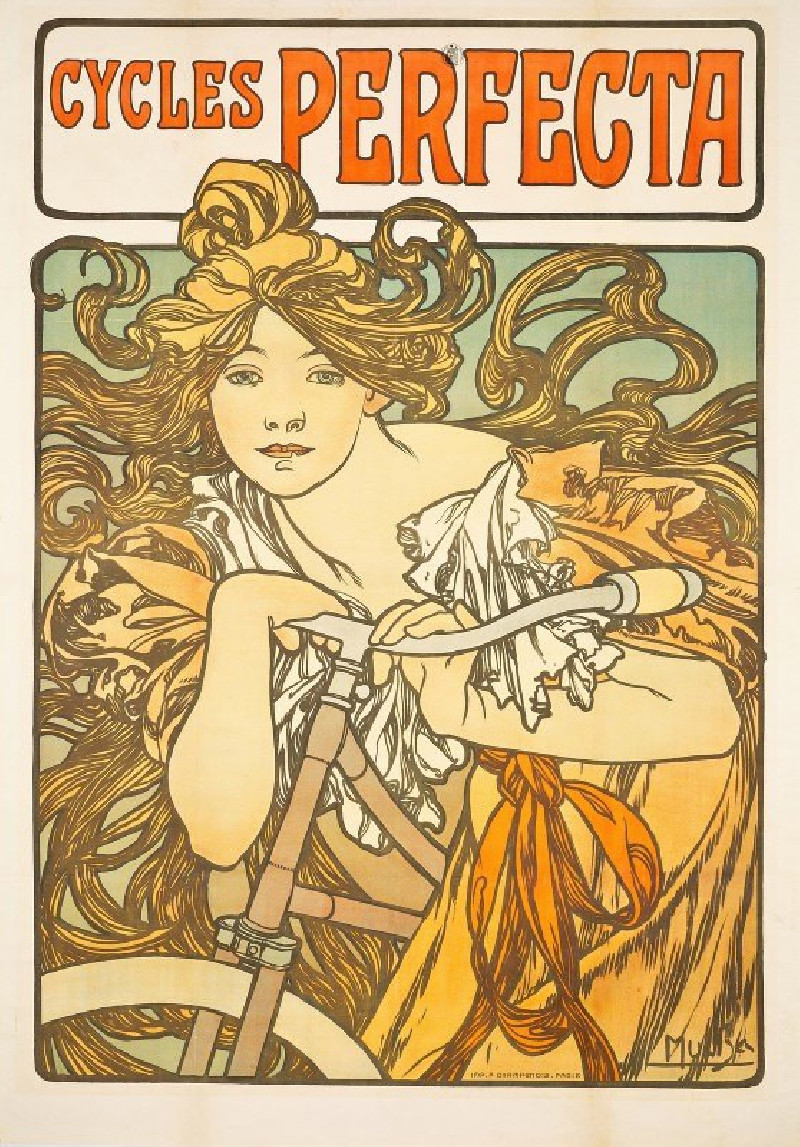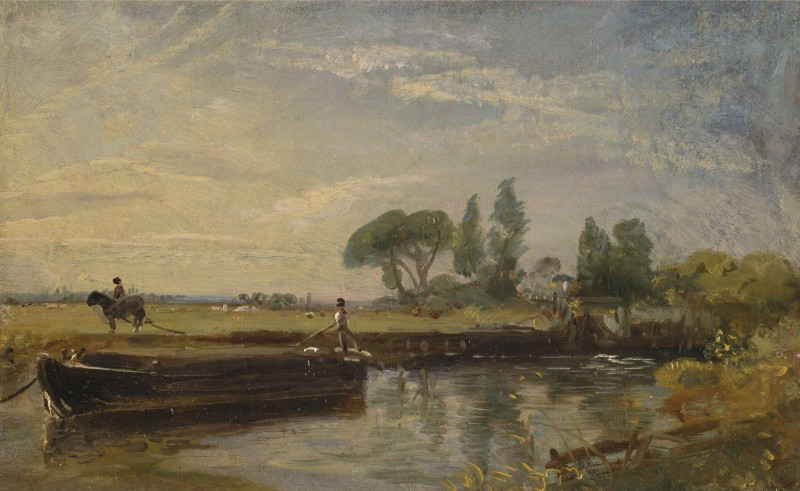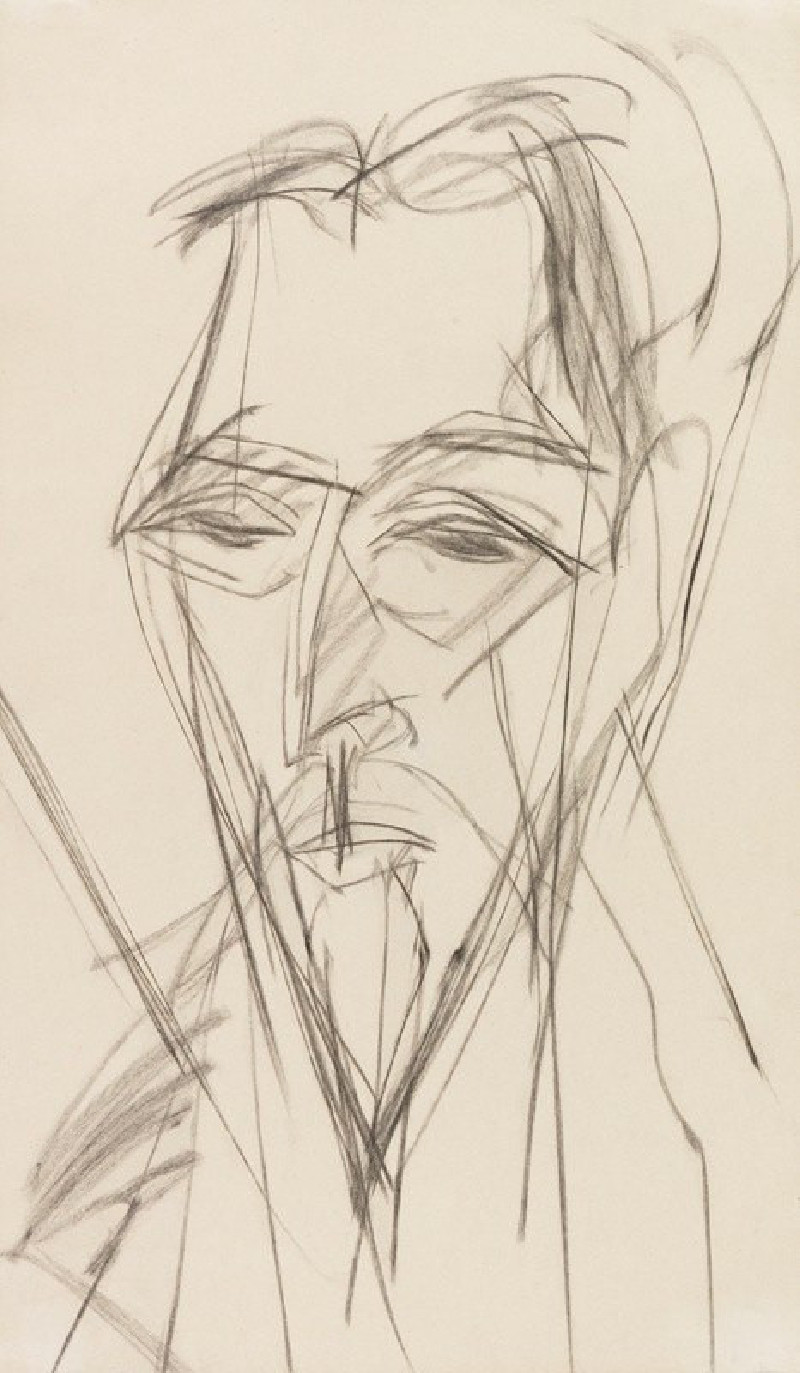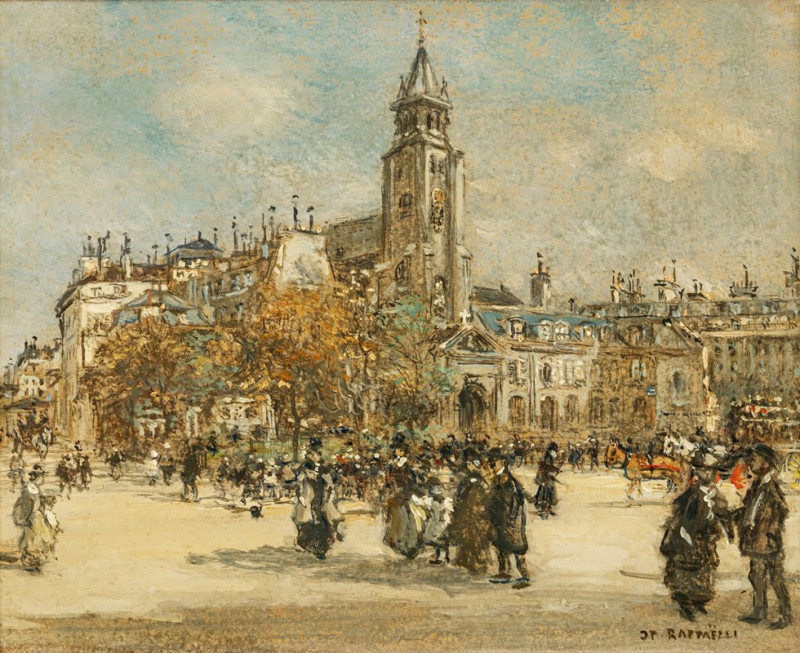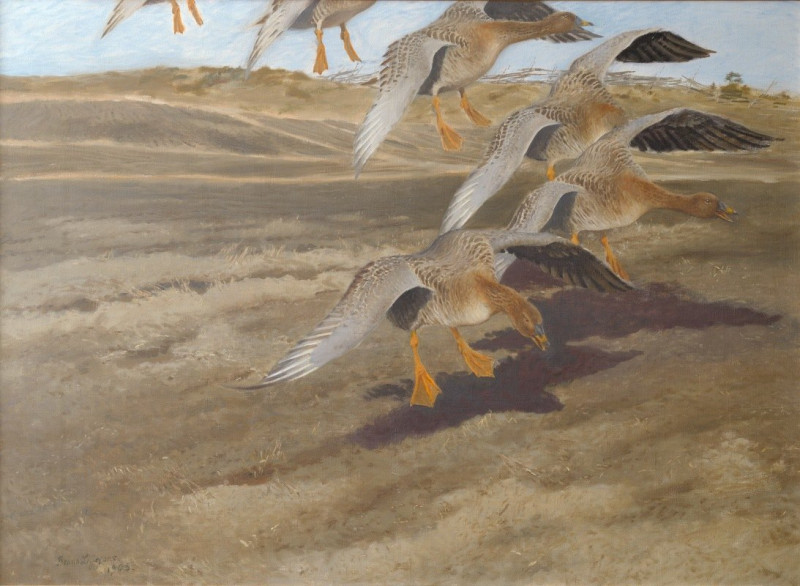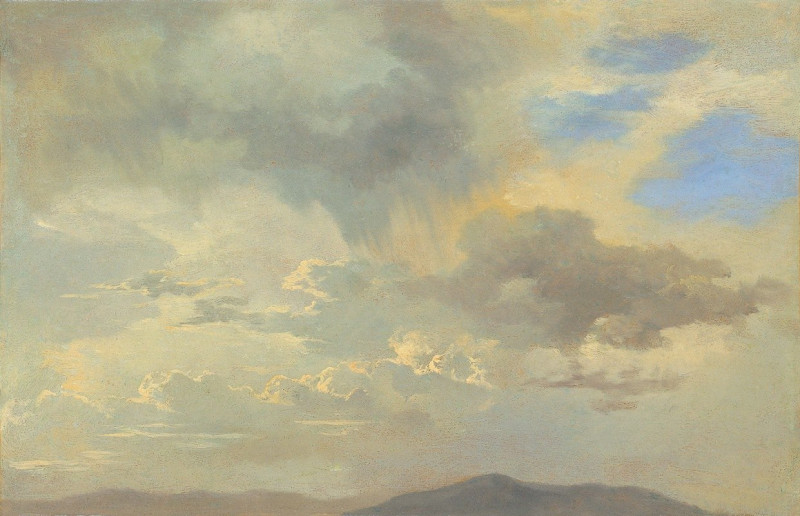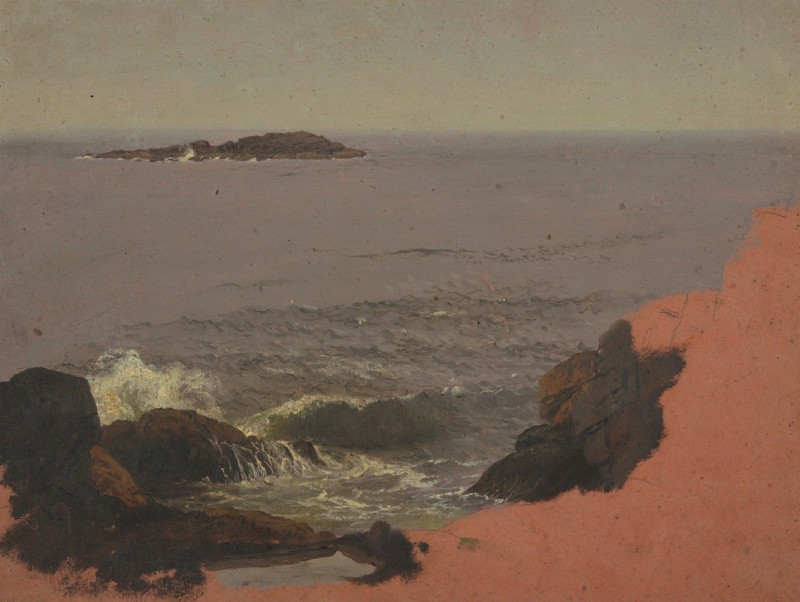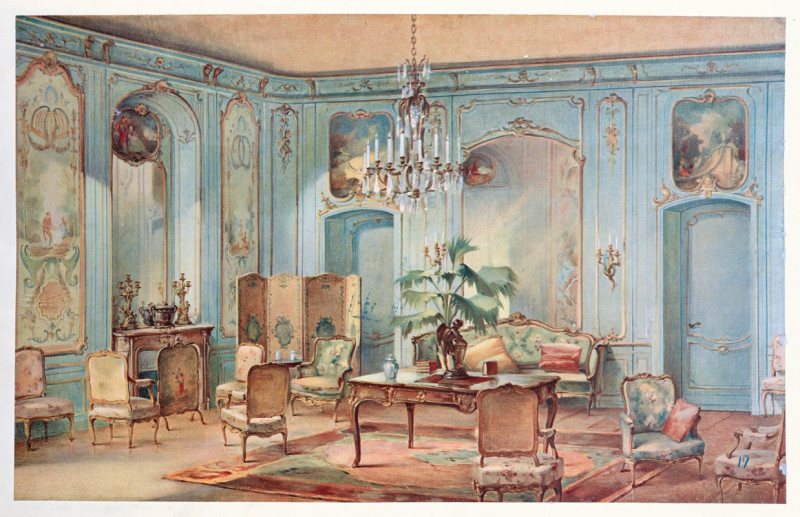The Mill (1645-1648)
Technique: Giclée quality print
Recommended by our customers
More about this artwork
The painting "The Mill" by Rembrandt van Rijn, dated between 1645 and 1648, captivatingly depicts a scene featuring a towering windmill perched atop a hill. Rembrandt's mastery of light and shadow is prominently displayed, casting the windmill as the compelling focal point against a dramatic sky that shifts tumultuously from dark, swirling clouds to lighter hues where the sun might soon emerge.In the foreground, a rugged landscape unfolds with figures that animate the scene. To the right, near a wooded area, a boatman maneuvers his craft along a tranquil river, adding a sense of quiet activity. On the left, a path leads up to the windmill, where a group of small figures underscores the grand scale of the mill itself. Some are likely engaging in everyday tasks, contributing to a narrative that speaks to both the mundane and the majestic.The painting, rich in tones and textures, draws viewers into a contemplative narrative about the relationship between humanity and its environment. Rembrandt, through his strategic use of illumination and shadow, not only highlights the mill's architecture but also imbues the scene with a mood that is both momentous and intimate.
Delivery
Returns
Rembrandt Harmenszoon van Rijn was a Dutch draughtsman, painter, and printmaker. An innovative and prolific master in three media, he is generally considered one of the greatest visual artists in the history of art and the most important in Dutch art history. Unlike most Dutch masters of the 17th century, Rembrandt's works depict a wide range of style and subject matter, from portraits and self-portraits to landscapes, genre scenes, allegorical and historical scenes, and biblical and mythological themes as well as animal studies.

